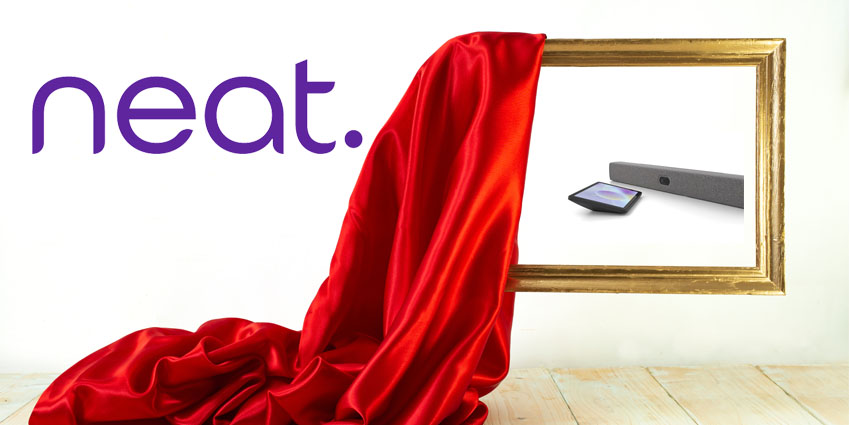Plantronics’ deal to acquire Polycom announced at the end of last month represents even further consolidation in the UC&C industry. Cisco Broadsoft, LogMeIn Jive now Plantronics Polycom have all occurred within six months and the landscape appears to show now sign slowing in its relentless search for partnership advantages.
The deal for two billion dollars is yet to be ratified but all being well this should be confirmed over the summer months in 2018. Greeted widely within the industry with surprise, the acquisition has also been hailed as one of the more prudent and sensible deals of its type. With more studied examination, the portfolios of the two organisations complement each other nicely with little to no direct overlap. There are also other logistical benefits for the new conglomerate which haven’t been fully evaluated.
Chris Thompson, Vice President of Enterprise Product Marketing at Plantronics was on hand for a Q&A to answer all of our questions that follow such a large, industry changing deal.
Why did this deal happen?
“We really saw that this acquisition made sense right now, the right leadership, the right technologies, the right market. Things are happening with our customers right now that this acquisition addresses.”
“Think of the background. 20 years ago people bought PBX systems, if you fast forward to 5 years ago we were still operating in a standardisation model. People were still buying Cisco, Mitel, Alcatel etc as a corporate standard for communications. Polycom was very much in that model along with Cisco for immersive video.”
“But something happened. There were two lever points that caused a dramatic shift in the industry. Firstly the introduction of the iPhone which created the concept of BYOD and then the availability of SaaS collaboration services which turned BYOD into bring-your-own-experience and what we have observed is that companies are no longer making standardisation decisions. They may say we are rolling our Skype for Business as a cooperate tool, but work group by work group people are making decisions that meet the needs of the work group. As people go through their day, one minute they might be using Skype for Business, then they might jump onto a Zoom Meeting or GoToMeeting etc they will be using multiple different platforms.”
“This tilt that we saw towards open collaboration, the move away from standardisation, it caused a pivot at Polycom. Where they pivoted from creating the end to end solution to creating the preferred endpoint solution for BlueJeans for Zoom, in some cases for Cisco, for Avaya etc. That was very much complimentary to the vision we were already engaged in. Which was to create great collaboration experiences for people no matter what system they were using.”
“So suddenly the vision we had been building, which was to create these great experiences on the person, on the desk and in the room, now Polycom directly complemented that.”
“We now have all the touch points that a typical customer will use to work with other people, to collaborate.”
Why was it such a good fit?
“One of the things that is completely different about this acquisition is normally when you do an acquisition you are bringing product to an existing channel. What’s so interesting about this is, is that the proposition at the channel and at the customer level should be really easy. It’s simply because our end customers are common. The people that are deploying Skype for Business and Teams are already buying Polycom IP Phones and Audio conferencing phones and Plantronics headsets and buying them from the same channel partners and those channel partners are buying them from the same distributors who today are buying them from separate companies. So if we look forward this is one of the really great opportunities.”
“We can take a whole host of cost and complexity out of the channel”
“What is means for us is that we can deliver benefits to customers more quickly but there is the unexpected benefit for our partners where we can drive further simplicity out of the door and just make it easy for these products to work together.”
How much work has gone into this deal?
“It takes literally months and probably people years all condensed over a few months. Even the process of due diligence took several months for the companies to understand what the relationship would be like. It’s a very complex transaction and now are finally in the process of seeking regulatory approval and closing.”
Were your common partners, Microsoft, Cisco, Zoom, BlueJeans, Avaya, Amazon, a key factor?
“What we saw there were a lot of vacant spaces. Working with Microsoft we could create a great experience for a Skype for Business user or for Team users but the minute that that customer needed to work with someone in Cisco Spark that experience started to degrade.”
“There is a real drive in this business to say, if we want to create better experiences and we want to do it for any vendor in the industry we need to have gravitas.”
“Otherwise it’s not worth their while. Now we believe once this acquisition closes we’ll be able to go to Cisco, go to Microsoft, go to Avaya and say if you are going to work with us and we want to create this great collaboration experience we now have market size to make it worthwhile. If we have to-do joint investment it’s going to be worth both our times to get that done.”
“The challenge that those vendors have is the adoption rate is in the very low double digits (within an organisation) in best case. It’s simply because the user experience is very hard to re-create, it’s hard to get it right. If we tackle this problem as a system problem and we look at portability of the user experience across a number of different touch-points that we are now more compelling to our partners to work with.”
So with that in mind does the deal vastly increase the market power of Plantronics Polycom?
“It’s partly scale. If we are just a headset peripheral. It’s really hard for Cisco to say, ok we are going to do customer engineering with you to make a better experience. But the minute we can say we will take that custom engineering and leverage across a whole bunch of different outlets then we become a critical mass for our alliance partners.”
How can this deal change the market?
“I think it will raise or grow the total available market, not just for us but for everybody, partly because it can help to address that user adoption issue.”
“We also see that for us the way that we intend to connect these systems through management tools, through interoperability tools and through analytics and insights tools is critical. Again that is going to create opportunities for others.”
“As adoption increases, as the value of analytics increases, frankly as the cost of deployment decreases it makes more sense for customers to deploy more technology and use it more widely. It’s going to be good for the market.”
“It’s probably also going to raise people’s expectations on experience quality too.”
“Experience quality today is really nothing to write home about.”
“That’s one of the things we want to invest in, to create great consistent user experiences no matter what back-end you are using. ”
It will be fascinating to see how the acquisition does change the market and whether some of Chris’ optimistic predictions do indeed come to fruition. Market expansion, improved experience quality and increased cross platform compatibility would all be welcomed by collaborators worldwide. Whether the Plantronics Polycom deal alone can start to achieve that is yet to be seen.






